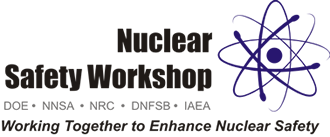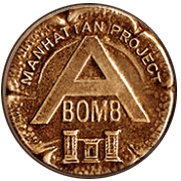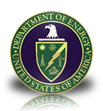HSS Safety Cartoon
"Halloween Health and Safety Tips"
(Click Here for more Halloween Safety Tips from the U.S. Centers for Disease Control and Prevention)

The New Bradley A. Peterson Live Fire Shoothouse was dedicated at the National Training Center in Albuquerque, NM on September 24, 2012

On September 24, 2012, the new Bradley A. Peterson Live Fire Shoothouse was dedicated at the National Training Center in Albuquerque, NM. This brand new, state-of-the-art facility will host DOE security personnel from throughout the country where they may practice tactical maneuvers in a realistic building environment.
The new facility is a key component in the Department's commitment to enhancing the capabilities of DOE protective forces.
» Read More

On September 19-20, HSS led the Department of Energy's Nuclear Safety Workshop at the Bethesda North Marriott Convention Center in Bethesda, MD.
Over 200 senior managers and nuclear safety specialists from DOE and other government, industry, and academic organizations involved in regulating, performing, or analyzing nuclear operations attended in person, and over 60 more attended via interactive Webcast.
Speakers included the Deputy Secretary of Energy, two Commissioners from the Nuclear Regulatory Commission, a member of the Chemical Safety Board, and senior managers from the Tokyo Electric Power Company, the International Atomic Energy Agency, the Federal Aviation Administration, and the Institute of Nuclear Power Operations.
The workshop featured breakout sessions on safety culture, risk assessment and management, and beyond design-basis events analysis and response.
HSS is developing a report based on the workshop results and recommended action items to enhance nuclear safety.
More information is available at http://www.hss.doe.gov/nuclearsafety/nsworkshop2012/.
Early Detection Saves Lives
Former Department of Energy (DOE) workers tell how medical screening helped them lead healthier and longer lives.

The Worker Health Protection Program (WHPP) is the DOE's Former Worker Medical Screening Program at 13 DOE sites.
WHPP provides free medical evaluations for selected occupational diseases every three years to eligible former DOE workers under a national medical protocol established by the DOE. WHPP is funded by the DOE and is operated by a consortium of the City University of New York, the United Steelworkers, and the Atomic Trades & Labor Council in association with clinical facilities in communities near DOE sites.
The sites covered under WHPP include the K-25 Gaseous Diffusion Plant, Y-12 National Security Complex, Oak Ridge National Laboratory, Portsmouth Gaseous Diffusion Plant, Paducah Gaseous Diffusion Plant, Idaho National Laboratory, Brookhaven National Laboratory, Nevada National Security Site, Lawrence Livermore National Laboratory, Lawrence Berkeley National Laboratory, Sandia National Laboratories, CA, and the former Mound and Fernald sites.
» Read More
Availability of Department of Energy Operating Experience Level 3 document, Safe Practices for Working with Nanomaterials in Laboratories

The Office of Health, Safety and Security (HSS) has issued the Operating Experience Level 3 (OE-3) document, Safe Practices for Working with Nanomaterials in Laboratories (OE-3: 2012-06).
This document provides information on the National Institute for Occupational Safety and Health’s recent publication: General Safe Practices for Working with Engineered Nanomaterials in Research Laboratories. The OE-3 was issued to raise awareness regarding the impact of this publication.
This OE-3 document is being issued as part of the Department's Corporate Operating Experience Program to facilitate the sharing of lessons learned from operating experience and the prevention of adverse operating incidents.
To access all OE documents, please go to: OE Level 1-3 documents.
To access all OE summaries, please go to: OE summaries.
HSS Supports Feds Feeds Families

Employees of the Office of Health, Safety and Security delivered more than 1,600 pounds of food for the Feds Feeds Families campaign to the Germantown offices on August 30, 2012 (see photo above).
This is in addition to 1,850 pounds delivered earlier in August, nearly 700 pounds collected at that National Training Center, and individual donations delivered by HSS employees throughout July and August.
All together, HSS collected well over 5,000 pounds of food to be distributed to the needy in our local communities. Special thanks to HSS employee Steve Domotor who served as the Department of Energy's Feds Feed Families Champion for 2012, working along with the Deputy Secretary to organize the Department-wide effort.
2012 National Day of Remembrance

This year marks the fourth consecutive year the United States Senate has unanimously approved a resolution dedicating October 30 as the National Day of Remembrance for former nuclear weapons program workers, including uranium miners, millers, and haulers. This day, which was first celebrated on October 30, 2009, honors the hundreds of thousands of American workers that have served this Nation in building its nuclear defense and contributing to its security from World War II through the Cold War.
In 2009, to mark the inaugural event, many DOE sites held public events involving local community service organizations, worker unions, Cold War veteran organizations, and local, state, and national governmental dignitaries. This year, there will again be events around the country to celebrate the day. The DOE Office of Health, Safety and Security (HSS) encourages the men and women of the United States to attend and participate in these events to show support for these tremendous individuals whose sacrifice helped the United States win the cold war.
This is a valuable opportunity to recognize our former workers, as well as the current DOE workforce, who serve our country by maintaining the national security and advancing our nation in the areas of science and technology. We are looking forward to October 30th and we plan to post more details about various events and ceremonies throughout the country as the day gets closer.
DOE Issues Report on NSI Fundamental Classification Guidance Review

In 2009, Executive Order (E.O.) 13526, Classified National Security Information, required agencies to complete a Fundamental Classification Guidance Review in order to provide a more transparent and open Government. Given the scope of the task, the E.O. gave agencies over 2 years to complete the review. The Office of Classification just completed this comprehensive review.
The Office of Classification evaluated 67 Headquarters (HQ) classification guides and 11 HQ classification bulletins to identify over 2,800 topics that identify National Security Information (NSI). Thirty-six subject area working groups examined the NSI topics, using almost 200 subject matter experts. The resulting unclassified report provides as much information as possible about how classification functions at DOE.
The report also provides a detailed explanation of how the Office of Classification evaluated the information and the reasons why certain information still needs to be protected. This transparency will provide the public with a better understanding of the DOE classification program.
In addition, the report summarizes over 100 recommendations that can improve the efficiency of the classification system. HS-60 identified information that could be declassified, and many areas where classification guidance could be consolidated, eliminated, or clarified.
» Read More



 Welcome to the U.S. Department of Energy (DOE), Office of Health, Safety and Security (HSS) public website. The Office of Health, Safety and Security was created to bring the vital DOE corporate functions of health, safety, environment, and security together under one office. ...read more
Welcome to the U.S. Department of Energy (DOE), Office of Health, Safety and Security (HSS) public website. The Office of Health, Safety and Security was created to bring the vital DOE corporate functions of health, safety, environment, and security together under one office. ...read more